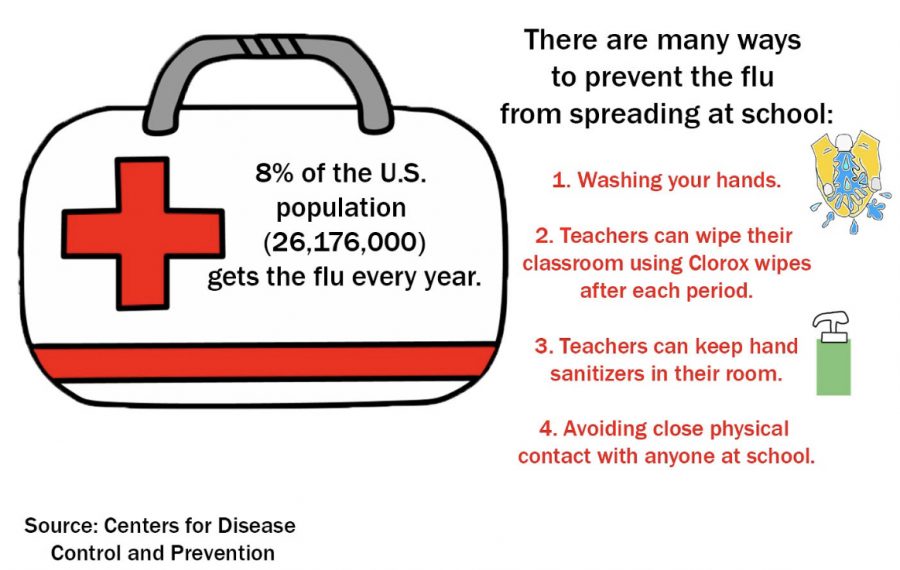Flu season signals precaution for all students and teachers
The flu season is the time of year when the flu is the most prevalent and spreads rampantly. However, there are many ways for people to prevent from contracting the virus.
January 29, 2020
As students walk down the halls, they are trying not to touch anyone or anything. They are scared that they will be contaminated by the gross bacteria that will make them sick.
February is the peak month for Influenza, commonly known as the flu. The flu is a very contagious virus, which means all students, teachers and school staff are encouraged to take extra precautions to stay healthy when they are at school.
“It’s so easy for us to get the flu because we’re in close, confined areas together for much of our day,” Coppell High School medical terminology teacher Jennifer Bullock said. “Using hand washing techniques and sneezing into your sleeve techniques to reduce the chance of getting sick is really important this time of year.”
According to the American Lung Association, the flu is a virus that infects the nose, throat and lungs. These bacteria are easily spreadable and can transfer to others through coughing, sneezing, talking or just being next to someone. Some symptoms of the flu consist of fever, headache, cough, chills, sore throat, fatigue, nasal congestion and stomach symptoms.
In a campus program such as KCBY-TV, students are sharing keyboards, cameras and various equipment on a daily basis. This facilitates the spread of germs and bacteria, making it a priority for KCBY to clean its equipment on a regular basis.
“We touch so many things here at school, from pens to books, notebooks and our backpacks are all very dirty,” KCBY adviser Irma Kennedy said. “We need to wipe all that stuff down. [We touch] some of the dirtiest things and then we put it up to our face.”
CHS, having about 3,530 students, is a vulnerable environment to getting the flu. Times such as lunch and passing period involve a lot of body contact, causing the virus to spread to many. Practicing sanitary habits to stay away from the virus is necessary to keep everyone safe from sickness.
“When I am touching some kinds of surfaces, I make sure not to touch my face,” CHS sophomore Natasha Banga said. “When I am coughing or sneezing, [I] cough into [my] elbow. These kinds of generic [preventative] measures, if [taken by] all students at school, can also contribute to preventing the spread of the flu.”
Objects used in the classroom and shared with many people also have a major effect on the spread of the flu. Keeping classrooms and personal items clean is very important to keep all of the germs away. Teachers are taking extra steps to make sure to keep the germs away as far as possible.
“We’re very hands on, [so] we have hand sanitizers by the gallon and disinfectant wipes,” Kennedy said. “We wipe down [the keyboards and the equipment] at least once a week, so kids don’t get sick.”
One of the main ways of the flu virus spreading to others is if a sick student or teacher comes to school. The flu then disseminates to others in school, making more students sick. Any student who is sick should stay home to rest up and keep others in the school healthy.
“If I’m feeling sick I will tend to stay home,” Banga said. “After I experienced the symptoms I decided to go home for three to four days and got better.”
Follow @sreejamudumby and @CHSCampusnews on Twitter











